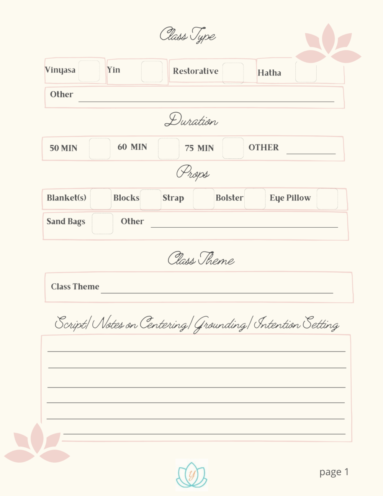Do you know what “holding space” means? Do you know how to intentionally hold space for someone? As a yoga teacher, do you know how to hold space for your students and why it is important? In this post we’ll explore what “holding space” means and learn if you’re doing it correctly.
Appropriately “holding space” for students was something I had to discover on my own through experience, and through imitation to a certain extent. I always recommend watching and learning from your most respected teachers and then putting your own spin on what you take away from that learning experience.
What Exactly does “Holding Space” Mean?
“Holding space” can mean many things to many people, but essentially, holding space for someone means that you are present for them, unconditionally.
According to 11 Things That Will Help You Hold Space for Someone (goodtherapy.org), holding space for someone means to practice loving-kindness towards them, use empathy, hold them in high positive regard, and allow them to feel whatever they need to feel without judgement (see full list here).
How Should Teachers Hold Space?
From a yoga perspective, these things come naturally with how we treat others (Ahimsa) while living a yogic lifestyle. As yoga teachers, however, there are a few things that we can do during class, to make sure we are holding space in the best possible way for our students.
- Remember that this is their practice, their time and space. Avoid talking about yourself, your problems, or your feelings.
- The language we use is important. Never tell students what or how they should be feeling. Just because a posture feels a certain way to you doesn’t mean it will feel the same to them.
- You should offer options in postures, but never phrase your cues with negative connotations such as, “if you can’t.” Instead, offer language that implies they have a choice to use a modification, such as “if you’d like to use a block today.”
- Pause during cueing giving students time to feel the posture and anything else (energy, inner strength, emotions) that arises within them. If you were holding space for a friend, you wouldn’t talk the entire time. You would allow them time to speak and express themselves. In yoga practice, the student needs time and space to listen to themselves.
- Be aware of the cadence and volume of your voice. Set the tone for the space you are holding. If you are teaching an early morning advanced level Vinyasa class, maybe it’s appropriate for your tone to be more upbeat. An evening Restorative class might call for a more subdued tone to allow students to enter into a calm state upon arrival. Regardless of the type of class, slow down and quiet your voice to match the movement of the class and as you move into a cool-down period and then into Savasana.
- Be mindful of the music on your playlists as well. The tone and volume should also match the curves of your class (slower warm-up music to a more upbeat for flow, then slow back down for the cool-down and perhaps no music or very quiet for Savasana). Some students may prefer music with no lyrics. Popular songs tend to evoke memories that some students may not want to visit.
- Teaching students how to practice Pranayama may be the single most important tool for them to learn to hold space for themselves (Read How to Teach Pranayama to learn more). Breath control stimulates our vagus nerve activating the parasympathetic nervous system (rest and digest state). This state allows students to feel relaxed and safe providing the perfect container for holding space. Focusing on the breath provides an anchor to slow our thoughts and acknowledge them without judgement.
- Guided meditations can be the perfect solution to aid students in holding space and eliminating distractions. During guided meditations, students’ thoughts can be directed to follow your voice and words, instead of listening to the constant mind chatter (chitta vritti), the monkey-brain that most of us have happening in our heads moment-to-moment.
- As I talked about in 10 Tips for New Yoga Teachers, ample time in Savasana is one of the most important things you can do to benefit your students. Holding this space for them is key in allowing them to feel and release what is needed. Sit quietly, watching over them to allow them to feel safe. When it is time to come out, do so gently, slowly, and with compassion.
What is the Goal of Holding Space?
In this post at yogauonline, they explain that “removing all distractions is a tall order but like every other goal worth reaching, it’s worth working toward. Working with the mind, then, is crucial to the ability to hold space. Holding space is part practice and part grace.“
In my post, Teaching the Niyamas Naturally, we discuss Svadhyaya (self-study), and the importance of “[arriving] on our yoga mats to make space for quiet reflection and introspection. Here we can be the observer of our thoughts, release our fears, and leave judgement and criticism behind. It is in these moments we may connect with our true inner Self. Here we can discern between the small self – the ego – and the true Self, the divine within us.”
In summary, when holding space, remember that students are coming to our classes from all walks of life, and social situations. Some may have experienced trauma to some degree. There is no way of knowing what they have gone through in their life or what they are going through at the moment they enter your class. Practicing Ahimsa towards our students then is crucial as we teach them how to hold space and practice Ahimsa towards themselves.





